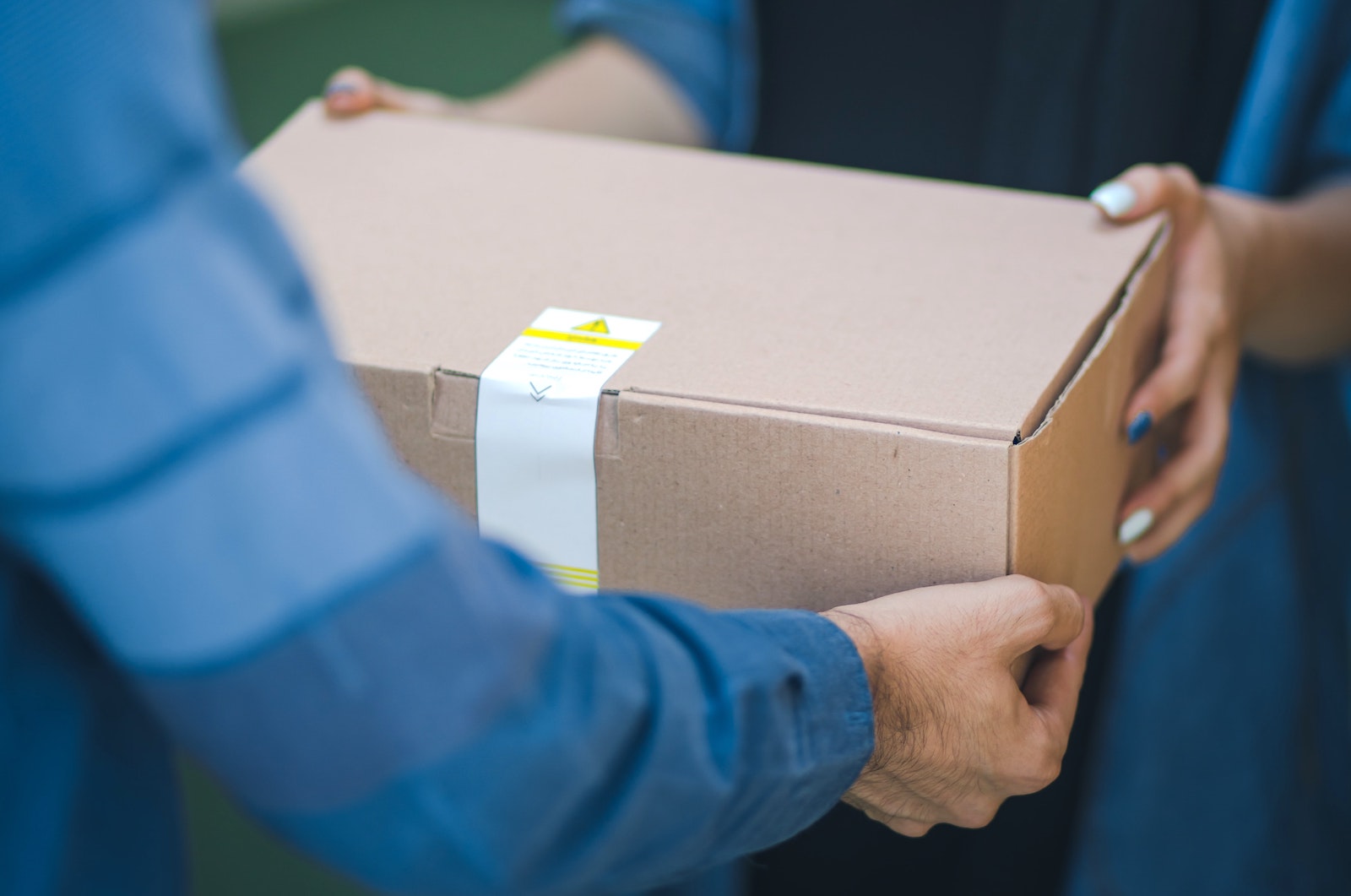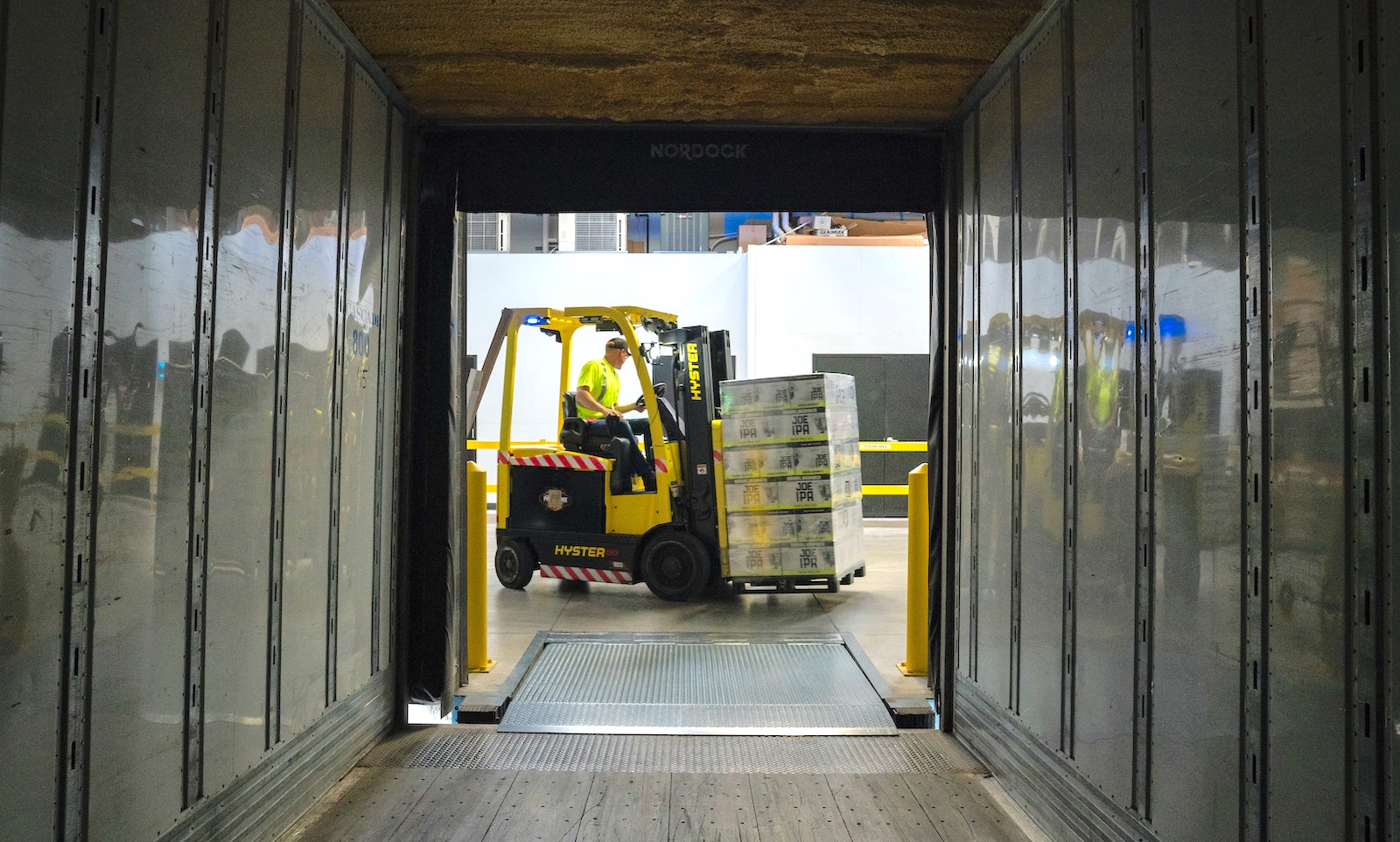Table of Contents
** Minutes
Why ecommerce brands offer a subscription order option
4 popular products sold in subscription boxes
What sets apart the successful subscription boxes from the unsuccessful
How to start your subscription box company in 10 steps
Subscription boxes that are thriving in 2020
Subscription box services are not just a fad. Brands like Birchbox and FabFitFun have paved the way for other subscription brands, and Cratejoy, the world’s first and only subscription box marketplace, makes it easy to start a subscription box company.
US-based ecommerce brands alone generate over $2.6 billion in revenue with subscriptions. From food products to apparel, subscription boxes offer convenience and cost savings for customers and a recurring revenue stream for ecommerce brands. Talk about a win-win!
Using a subscription box service, shoppers can get ingredients delivered to make a fresh meal, freshen up their wardrobe without rummaging through racks, or easily stay on top of their personal care needs.
Starting a subscription box company is an exciting endeavor, but there is a lot that goes into it — including more than just having a great subscription business idea. In order to start a subscription rate service, you will need to consider everything from sourcing a quality product to thinking through your ecommerce logistics strategy.
It might seem overwhelming at first, but if you do your research and take the proper steps, there are a lot of services, resources, and technology that will help you run a successful subscription company.
Note: The terms ‘subscription boxes’ and ‘recurring subscription orders’ are often used interchangeably, but there are slight differences. This article applies to both types of subscription models.
What are subscription boxes?
Subscription boxes deliver products on a predetermined recurring basis. Practically anything can be delivered as a subscription, from packaged food items to makeup.
The products delivered can be custom-picked based on a customer’s personal preference each time or the same for every order, which can be referred to as a ‘recurring subscription model.’ This type of ecommerce business model is popular amongst fast-growing direct-to-consumer brands as it’s simpler than offering a subscription box service, but still offers convenience and cost savings for the customers while locking in revenue.
Why ecommerce brands offer a subscription order option
Ever think about why Netflix and Amazon Prime are so popular? You forget you are paying a monthly fee in exchange for the value you get. Not only do recurring orders offer a ‘set it and forget it’ option for customers and brands, there are several other reasons why ecommerce brands invest in offering a subscription order option.
1. Earn recurring revenue
While customers can keep receiving the same order without the hassle of reordering, brands don’t have to pay as much to remarket to customers and can potentially recover customer acquisition costs faster. The longer you keep a customer subscribed the greater, the return on investment (ROI). As long as you don’t give them a reason to unsubscribe, they won’t think about canceling and you’ll keep receiving payments.
2. Better predict order cadence
Subscriptions are great for sales forecasting and understanding customer demand month after month. Knowing how many orders need to be fulfilled and shipped ahead of time can significantly improve stock control and order management. By keeping the right stock levels on hand, you can reduce warehousing costs and the capital you have tied up in inventory.
3. Offer customers a deal
Subscription services offer an option for customers to ‘subscribe & save’ by having them commit upfront for a discount, rather than pay full price each time they reorder. While subscriptions offer a way for customers to save money, you’re given a monthly, quarterly, or yearly baseline of income and the additional revenue quickly offsets the discount given.
4 popular products sold in subscription boxes
A subscription box is a great way for customers to get their hands on new items and products based on their personal preferences. It’s also a great way to stay stocked on essentials and/or products that are used daily or need to be replaced often, such as toothbrushes, health products, and makeup.
Going to the grocery store or running out of supplies, like food or personal care items, at the last minute can be stressful and time-consuming — especially during the COVID-19 pandemic. That’s why many of the most successful subscription box services deliver products that are deemed essential, prevent a trip to a brick-and-mortar store, or offer a deeper variety than you may find in-store. Here are some of the most popular products you’ll find in a subscription service.
1. Razors
Dull razors, the right blade replacements, and having enough blade refills are common pain points for people who shave. Razors and razor blades need to be replaced often, so it’s no wonder they have become a popular subscription item. Razor brands like Dollar Shave Club, Billie, Harry’s, and BAKblade have grown significantly due to their convenient subscription box service.
“We have access to live inventory management, knowing exactly how many units we have in each ShipBob fulfillment center. It not only helps with our overall process in making sure our inventory levels are balanced to plan for our razor and blade refill shipments, but also for tax purposes at the end of the year. ShipBob simplified the entire process for our accountants and for us.”
Matt Dryfhout, Founder & CEO of BAKblade
Many razor brands also launch new products and provide an option to add other personal care products to a subscription box, such as shaving cream, body wash, and deodorant — so you can get all your bath and body essentials delivered in one box.
2. Snacks and packaged foods
Snacks and packaged foods are great for households and individuals who have a busy schedule. Some of the most popular food products delivered with a description include coffee, tea, protein powers, meal replacements, and more.
Especially for families, snacks are great to have on subscription so kids never run out of their favorite after-school snacks. What’s great about starting a packaged food subscription box service is that you can continue to offer new items and meet a unique need, such as offering all-natural ingredients, allergy-free, diet-focused, and more. Some great examples of packaged food subscription companies are SnackCrate, Vegancuts, AmpleFoods, and TB12.
“We offer subscription orders on our site with the choice of delivery every 30, 45, or 60 days. ReCharge and ShipBob work very well together for this, and ShipBob is able to handle our order volume very well, including when we experienced 4x our normal volume in December.”
Michael Peters, VP of E-Commerce Operations at TB12
3. Personal and self-care products
Especially during the coronavirus pandemic, personal care subscription box services make it easy to stay stocked on health, wellness, and hygiene items such as toothbrushes, dental floss, shampoo and conditioner, body wash, deodorant, tampons, makeup, and more. It’s also a great way for shoppers to try new products and personal care brands that are not always found conveniently in stores like Target or Walgreens.
“Our subscription option has become popular among customers, where they subscribe and save money. We rely on a great post-purchase experience for this. Luckily, ShipBob is a fulfillment partner that is truly an extension of our brand.”
Manuel de la Cruz, CEO at Boie
4. Medical and digital health products
From acne treatments to diabetes kits, subscriptions for medical products are becoming very popular as they provide not only convenience but a way to help people stay on top of their health easily while destigmatizing these products. These types of products also may offer a digital component, such as an app or access to medical support, which helps people better monitor their health without having to take a trip to the doctor’s office.
“Our business is almost all subscriptions, and ShipBob’s fulfillment service helps us offer reliable, affordable shipping that shows up at the same time each month. We offer a free one-month supply as part of our initial three-month personalized acne treatment kit from our app. We also sell other products that can be purchased on our website or through the app.”
Oded Harth, CEO & Co-Founder of MDacne
What sets apart the successful subscription boxes from the unsuccessful
In order for customers to continue their subscription box service after the first delivery, the post-purchase experience and ability to build strong and more direct customer relationships are critical for long-term growth. But if issues arise that negatively impact the customer experience or makes the subscription unreliable, the customers you worked hard to get are more likely to cancel their subscription.
Bullet-proof logistics
Brands that offer subscriptions highly benefit from automating the order fulfillment process. Especially if you’re considering offering a subscription box service that delivers your line of products and provides a customizable experience for the customer (e.g., rules, kits, bundles, etc.), many ecommerce brands work with a third-party logistics (3PL) partner so they can spend less time on packing and shipping and more of their valuable time on growing their subscription service.
“With our 3PL ShipBob, we were able to mark any combination of SKUs as a unique bundle and select the component SKUs right through the dashboard. Each time that bundle was fulfilled by ShipBob, we could see the individual components that were physically picked, and we would know that the order went out as expected. ShipBob also allowed us to make changes to bundles on the fly with complete control and visibility, which is important in monthly subscription boxes, holiday bundles, and many more scenarios.”
Gerard Ecker, Founder & CEO of Ocean & Co.
An exceptional unboxing experience
From custom branded boxes or poly mailers to marketing inserts, each detail helps to create a memorable unboxing experience — or the anticipation a shopper has when they are eager to open their package once it gets delivered — that gives a competitive edge for every single package. By putting extra care into every order, your customers will be excited each time a new order arrives.
“We use noissue for our eco-friendly mailers that are 100% compostable, and ShipBob ships orders out for us in our custom branded packaging.”
Manuel de la Cruz, CEO at Boie
Every little detail, from custom packaging and how it’s packaged, to branded marketing inserts and free samples, can make a big impact on the ‘unboxing’ experience.
For instance, offering branded, personal gift notes to your shoppers will make the unboxing experience even more memorable (you can even let your customers add a custom gift note at checkout if they are sending a present to someone special).
Engaged customers
Product discounts are the primary incentive to attract more subscribers, but there are ways to provide more value for customers beyond cost savings. Many ecommerce brands have found success in referring to their subscription box service as a membership program. This makes it fun for customers to subscribe and stay engaged. You can offer discounted prices and shipping costs plus free trials, a first-look at new products, reward points, exclusive content, freebies, product samples, and more.
“I find you really get to engage with your customers more when you have a subscription relationship. For Jetson, it means that orders to our base are less transactional and more educational or entertaining.”
Stefan Weitz, CEO and founder of Jetson
How to start your subscription box company in 10 steps
Oftentimes, a subscription company becomes successful because it solves a specific pain point or fills a big gap in the market. If there’s a type of product you wish could be delivered to you on a recurring basis, or would make your life easier if the item(s) could be delivered, rather than searching for it at the store, chances are other shoppers are looking for this solution too. Who knew that Warby Parker would become the biggest online glasses brand by offering five glasses of your choice to try on before you buy?
But to make your idea into a reality, there are steps you’ll have to consider first. If you’re ready to start a subscription box company or in the pre-launch phase, here are ten steps to get you started.
1. Find your niche
Finding an ecommerce niche that is underserved will help your subscription offering stand out from the rest. A niche is a market within an industry that sells a specific type or product with a unique differentiator. For instance, you could sell makeup that’s 100% natural and organic, or offer a food product that’s made for a specific type of diet, like dairy-free coffee cream brand Prymal does.
“When my father was diagnosed with diabetes, I took the initiative to create the perfect sugar-free creamer formula that he would approve of. After two years of trial and error, I finally found it! As my business grew, heading to the post office with bags full of orders was not sustainable, so I decided to work with a 3PL. ShipBob allows entrepreneurs, like myself, do what we do best — create, sell, and grow!”
Courtney Lee, founder of Prymal
2. Perform customer research
By 2023, 75% of ecommerce brands are expected to offer a subscription service. Competition is high, so make sure you know who your audience is and if there’s demand for your offering before you move forward with your idea. You’ll want to choose a high-demand product that makes for a great subscription box service (items that are often purchased daily, monthly, or yearly). From there, you’ll have to figure out where your ideal customer shops, how they search for products online, and what they look for in a subscription box service.
3. Source products
Once you know the type of product you want to sell, it’s time to source your products. Sourcing high-quality products is one of the most important steps in creating your subscription offering. There are several avenues you can take to source products, from making them yourself, to working with local stores or suppliers, to wholesale distributor options. Another great option is to source from global marketplaces such as Alibaba and Indiamart, which both offer bulk goods at a low cost.
4. Test products
Once you’ve sourced products, you will want to test them for quality. Have your friends or potential customers test them out and provide feedback. This will help you figure out how to market and brand your product. The more you understand what your potential customers will like about your product (e.g., a body wash that leaves your skin feeling soft and smooth, or a new formula for natural deodorant that people may be skeptical to use unless they try it first), the stronger your branding and messaging can be.
5. Design your subscription box
Though not a requirement, putting in the extra effort to design a standout subscription box can drive a special ‘unboxing’ experience. The options you have to design your subscription are endless — you can brand the exterior of the box with custom printing, or use custom packaging tape or branded stickers.
This helps you to build brand recognition every single time a subscription box is delivered. Branded boxes might also earn you free social media exposure as customers may want to show off their latest subscription box delivery through photos they share. It’s an example of social commerce at its finest.
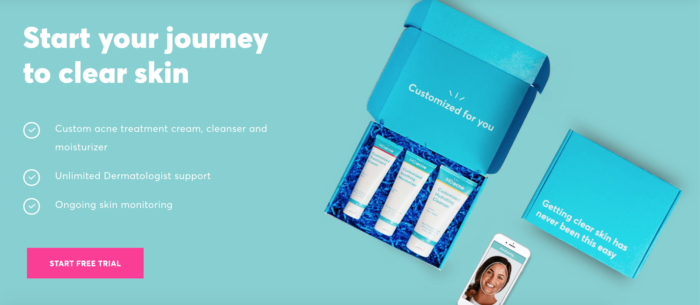

However you decide to customize your box, make sure it’s on brand. For example, if you sell an eco-friendly product, the box and dunnage should also be eco-friendly packaging.
6. Set up your ecommerce site
There are a lot of great ecommerce platform options. Some of the top ones are Shopify, BigCommerce, WooCommerce, and Squarespace. Many of the platforms make it easy to set up a subscription box service from recurring billing software to easy-to-integrate subscription apps, as well as the option to custom build your own cart with the help of a developer. Here is an overview on how leading ecommerce platforms support subscription orders.
Shopify and Shopify Plus
If you choose Shopify, the two most popular apps on the Shopify App Store are ReCharge and Bold Commerce. Both these apps provide great functionality, flexibility, and make it easy to build and scale your subscription offering.
BigCommerce (Built-in recurring billing software)
With BigCommerce, no app is needed to set up recurring billing. They make it convenient, attractive, and easy to encourage larger carts and better conversion rates by allowing your customers flexible ways to pay for goods and services.
Merchants with a subscription component to their business can take advantage of recurring billing through subscription features (paying for goods and services on a repeated schedule) and financing (buying now and paying later).
Squarespace (Built-in recurring billing software)
With Squarespace’s Advanced plan, you can set up recurring billing cycles, edit subscription products, and manage customer subscriptions — no app or third-party integration needed.
Customers are given full visibility with access to details such as the next order date, price, subscription frequency, order history, and billing and shipping information. To manage retail fulfillment, you can access tracking information and send customers an order fulfilled notification. Learn more here.
WooCommerce and WordPress (WooCommerce Subscriptions plugin)
WooCommerce offers a paid plugin to manage product subscriptions. With the plugin, you can create and manage products with recurring payments and fully customize your subscription program with product-of-the-month clubs, weekly service subscriptions, and yearly software billing packages. Learn more here.
7. Choose your subscription options
The next step would to choose the type of subscription options you’ll offer. This includes customization (flavors, colors, quantity, etc.), frequency (weekly, monthly, bi-monthly, quarterly, yearly), and the type of discount or savings you’ll offer. For example, meal replacement brand Ample Foods offers subscribers the option to choose their flavor, meal size, and frequency.
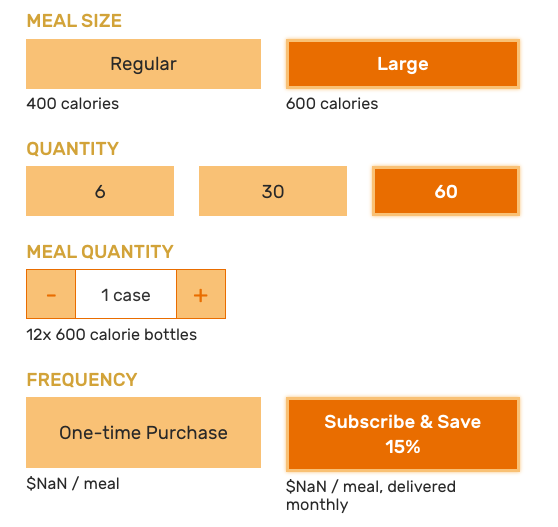

8. Designate your logistics partner
Subscription box fulfillment encompasses storing inventory, picking and packing orders, and shipping products to a customer on a regular, predetermined basis. These shipments can be the same each month or quarter (e.g., razors, toothbrushes, deodorant, etc.) or a different selection of curated products each time (e.g., wardrobe items).
Subscription boxes that are curated use an assortment of different products from a variety of brands each time (e.g., Birchbox, FabFitFun, Stitch Fix, etc.), which makes it more complex. These types of subscription services are oftentimes not fit for a fulfillment company for distribution.
If you’re looking to grow a subscription service that delivers the same products on a recurring basis (weekly, quarterly, monthly, or yearly) and/or you sell one-off products, then a logistics service provider like ShipBob can help you save time by delegating fulfillment tasks and offer a logistics strategy that will get your orders to customers faster while reducing shipping costs.
9. Shape your marketing strategy
To stay competitive, you must have a digital marketing strategy in place for your subscription brand. Many successful ecommerce businesses grew by relying heavily on Facebook and Instagram ads, but with rising ad costs, the barriers to successful advertising are higher than ever before. The type of marketing channels you use depend on your audience and other factors.
“My #1 piece of advice for fellow operators is to make changes to any unprofitable channels. Focus on other channels that can get your brand out there, and invest that next marketing dollar there. Make sure your site and ads are optimized with the right messaging that fit the situation too.”
Leo Carrillo II, CEO & Co-Founder of Hair Craft Co.
Besides digital marketing, there are other ways to market your products, from building organic social media following to working with influencers. Before any of your customers turn into subscribers, you need to build trust from the very beginning. You can attract more first-time customers by marketing fast and free shipping on their first box on your website, on social, and through paid ads.
10. Use email to turn one-time shoppers into repeat buyers
If a customer makes a one-time purchase from you, this is a great opportunity to send them a follow-up email showcasing the cost savings of becoming a subscriber. Email marketing is a great way to keep your one-time buyers engaged and convert them into long-term customers who make repeat purchases.
Modern email newsletter software lets you automate this whole process. For example, you could use the subscriber’s buying history to curate a personalized list of best-selling products that you could send them each week. Or, you could make use of data related to buying frequency to remind the customer to reorder when their supplies are about to run out.
This level of communication isn’t limited to email. SMS is becoming a more popular channel to convert shoppers and have customers reorder through text messages.
Subscription boxes that are thriving in 2020
From digital health to meal replacements, there is a subscription box company for just about any type of product. The following ecommerce brands offer unique and engaging subscription services that you can’t find anywhere else. Read on to learn more about how offering a product subscription helped them grow.
TB12
TB12 is Tom Brady’s health, wellness, and fitness brand that sells a variety of workout and nutrition products. They also offer subscription options for their supplements, protein powders, and food products, including their TB12 Home Gym Kit, which is curated by a team of body coaches and provides everything you need to have a great full-body workout from home.
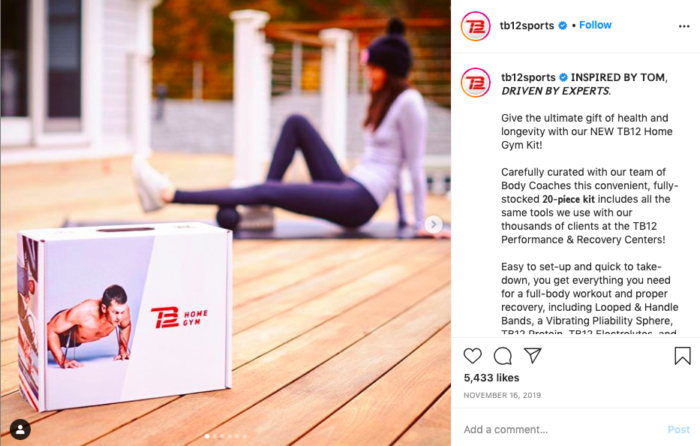

“Customers get accustomed to a certain service level at a low price — often free — and want it faster over time. Ever since we started our partnership with ShipBob in the summer of 2018, they’ve been able to deliver the customer service level we need at the right cost.”
Michael Peters, VP of E-Commerce Operations at TB12
MDacne
MDacne offers a subscription-based, personalized acne treatment product for customers. Since MDacne is a tech-focused brand, they use ShipBob’s Developer API to fulfill custom personalized kits for their customers.
“ShipBob’s analytics tool is also really cool. It helps us a lot with planning inventory reorders, seeing when SKUs are going to run out, and we can even set up email notifications so that we’re alerted when a SKU has less than a certain quantity left. There is a lot of value in their technology.”
Oded Harth, CEO & Co-Founder of MDacne
Ample Foods
ShipBob customer Ample Foods is a meal replacement brand that makes it easy and fast to achieve optimal nutrition, and its monthly subscription service offers just that. Subscribers save money and are given the option to choose their flavor, meal size, and meal quantity. Staying healthy was never this easy.
“ShipBob has an easy integration with Shopify. It’s been very simple for us to manage subscription orders, which have become a big part of our business. We’ve made a huge push toward incorporating Ample Foods into people’s daily diets and routine. Thankfully, ShipBob partners with a lot of the tools we use like ReCharge. They’ve worked hard to understand our needs, offer more flexibility than other 3PLs, and give us business-specific solutions. ShipBob has been a great partner as Ample has grown. It’s all really due to their team.”
Pablo Gabatto, Business Operations Manager at Ample Foods
Boie
Fast-growing personal care brand Boie offers eco-friendly products, including toothbrushes and body scrubbers. Since you can’t find Boie in the store, they created a unique, interactive experience for online shoppers and customers, making it fun and engaging to select and customize their subscription plan.
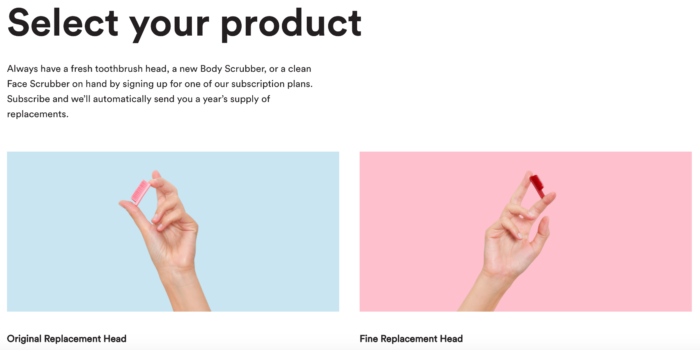

“We sell bundles of our frequently ordered together products and gift sets, which increases our average order value. Because our products are low-cost, it’s important that shipping costs are low. We use ShipBob’s centrally located fulfillment center to improve transit times and shipping costs”
Manuel de la Cruz, CEO at Boie
How 3PLs like ShipBob can drive revenue
To offer a subscription box service, you have to think beyond just convenience and cost savings, and more about offering a great product and an experience your customers will love.
Don’t forget about order fulfillment! If you need help fulfilling recurring subscription orders that go out on a predetermined, recurring basis, ShipBob can help.
ShipBob is a tech-enabled 3PL that offers simple, fast, and affordable fulfillment for ecommerce businesses across our network of fulfillment centers (with new locations across the globe continuously underway).
We partner with ecommerce brands that offer a subscription service and make it easy for them to connect their online store to ShipBob’s subscription-friendly technology to fulfill subscription orders automatically, accurately, and quickly. Click the button below to request a quote.
Common FAQs on selling a subscription box
There is a lot that goes into the logistics of selling and shipping a subscription box. Here are the most frequently asked questions about managing a subscription box company.
What is the unboxing experience?
In ecommerce, the ‘unboxing experience’ refers to the post-purchase experience a customer has while they open their package for the first time. A great unboxing experience can be created by adding extra touches to the package that delights a customer, such as branded boxes or poly mailers and marketing inserts. This helps your brand stand out and keeps customers excited about getting their next package while locking in recurring revenue.
Where can I get my subscription box designed?
How much does it cost to ship a subscription box?
It all depends. There are several different factors that impact shipping costs, whether you’re shipping one-time purchases or recurring subscription orders. To calculate shipping costs, you’ll have to consider package dimensions, package weight, shipping destination, value of contents shipped, and delivery times. To get carrier estimates, click on any of the following carrier links: USPS, FedEx , and UPS.


